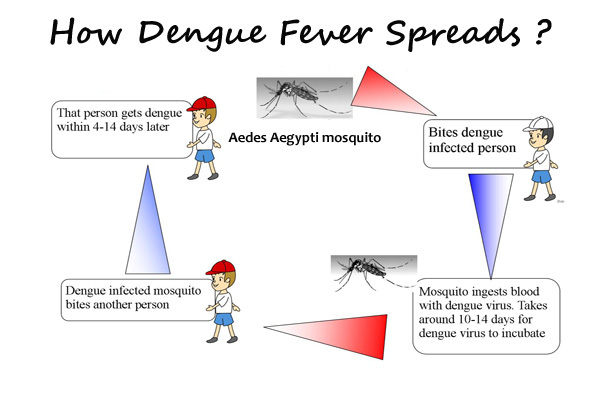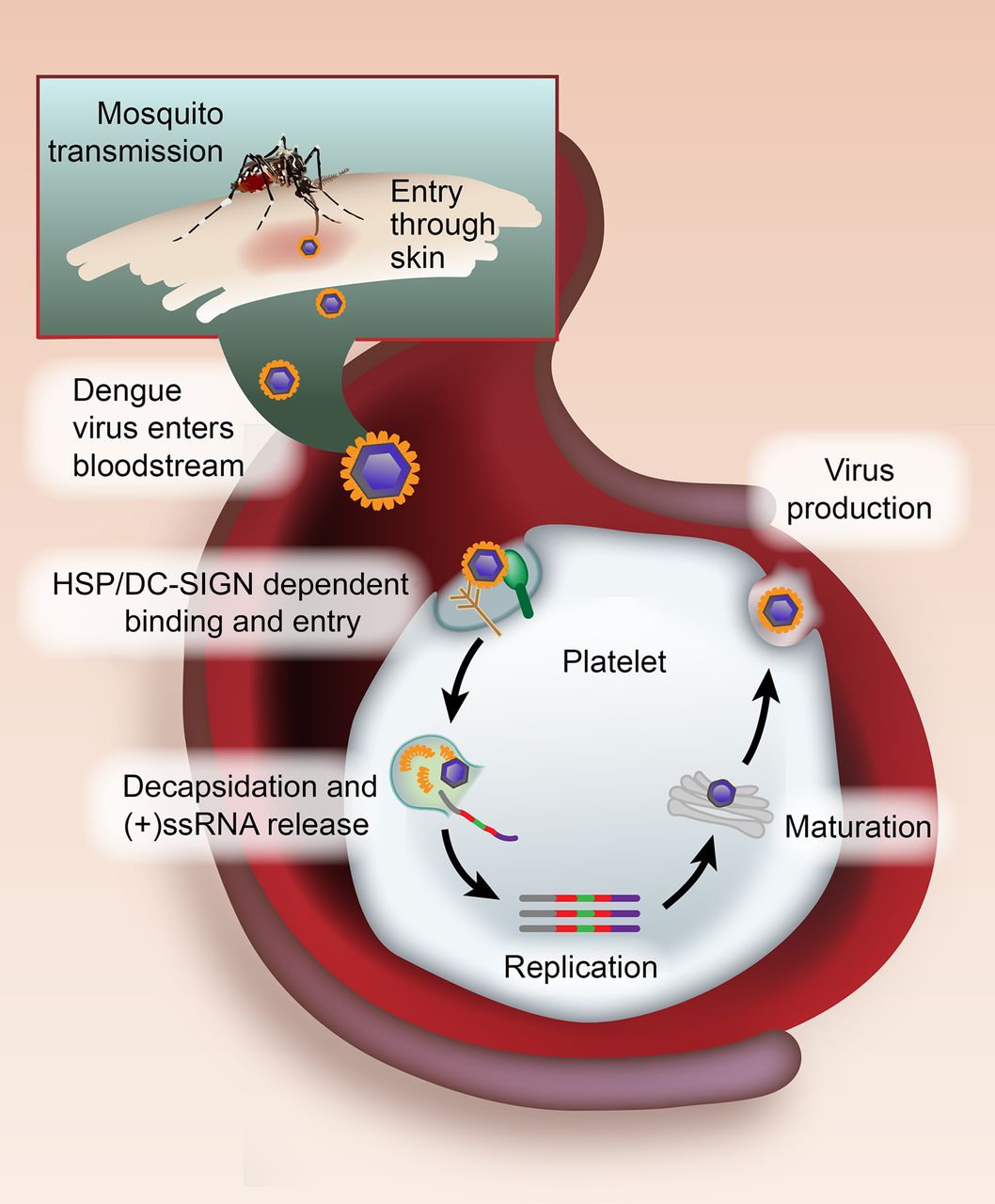Hi everyone, we learned about Dengue Fever from our earlier posts. If you haven’t read them yet, then follow the below links. Keeping a little knowledge about Dengue is far better then having nil information.

Today, we will learn about Mechanism of Dengue Fever in Human Body. In simple words, we can say “how dengue fever affects the human body and what are organs that gets affected with Dengue Virus”.
At first, Mosquito carrying the Dengue Virus bites a Healthy person. The viruses enters into the skin along with Mosquito’s (Aedes) saliva. Now the viruses attacks White Blood Cells and enters into them so as to replicate.
White Blood Cells (WBC) carrying Dengue viruses move throughout the body. This WBCs respond by producing signaling proteins such as Cytokines and Interferons which are primarily responsible for Flu-like symptoms, Fever and severe Body pains.
In severe cases, the Virus production inside the White Blood Cells is greatly increased, due to which the other Organs such as Liver and Bone Marrow also get affected.
The fluid from the bloodstream starts leaking from the blood vessels due to Capillary Permeability, as a result the Blood Pressure will falls down and low blood flows to vital organs.
The Stromal Cells of Bone Marrow also get affected due to which there is less production of Platelets inside the body. Platelets are quite necessary for effective Blood Clotting, absence or reduction of this Platelets leads to Bleeding.
How Dengue Virus Replicates inside the Body?
Now you came to know that how dengue virus spreads and infects the body. Let’s have a little discussion on Virus Replication inside the body –
Once inside the skin, dengue virus binds to Langerhans cells (a population of dendritic cells in the skin that identifies pathogens). The virus enters the cells through binding between viral proteins and membrane proteins on the Langerhans cell, specifically the C-type lectins called DC-SIGN, mannose receptor and CLEC5A. DC-SIGN, a non-specific receptor for foreign material on dendritic cells, seems to be the main point of entry. The dendritic cell moves to the nearest lymph node. Meanwhile, the virus genome is translated in membrane-bound vesicles on the cell’s endoplasmic reticulum, where the cell’s protein synthesis apparatus produces new viral proteins that replicate the viral RNA and begin to form viral particles. Immature virus particles are transported to the Golgi apparatus, the part of the cell where some of the proteins receive necessary sugar chains (glycoproteins). The now mature new viruses are released by exocytosis. They are then able to enter other white blood cells, such as monocytes and macrophages.
The initial reaction of infected cells is to produce interferon, a cytokine that raises a number of defenses against viral infection through the innate immune system by augmenting the production of a large group of proteins mediated by the JAK-STAT pathway. Some serotypes of dengue virus appear to have mechanisms to slow down this process. Interferon also activates the adaptive immune system, which leads to the generation of antibodies against the virus as well as T cells that directly attack any cell infected with the virus. Various antibodies are generated; some bind closely to the viral proteins and target them for phagocytosis (ingestion by specialized cells and destruction), but some bind the virus less well and appear instead to deliver the virus into a part of the phagocytes where it is not destroyed but is able to replicate further.
However there is one more theory which states that Dengue Virus binds Blood Platelets thereby resulting in their count reduction. The theory is as follows:

– DENV belongs to the Flaviviridae family and is transmitted to humans by infected female mosquitoes of the Aedes genus.
– When an infected mosquito bites a human, DENV enters the bloodstream and binds to platelets via heparin sulfate proteoglycans (HSP) and DC-SIGN.
– Through mechanisms that are unresolved, the DENV enters into platelets and the viral particle is uncoated (decapsidation). This uncoating process releases the (+)ssRNA virus genome into the cytosol, where the (+)ssRNA directs the synthesis of viral proteins, and then the generation of a minus strand, which is transcribed into new plus-stranded molecules (replication).
– Nucleocapsid assembly and maturation ensue in the Golgi, leading to infectious virus production.


